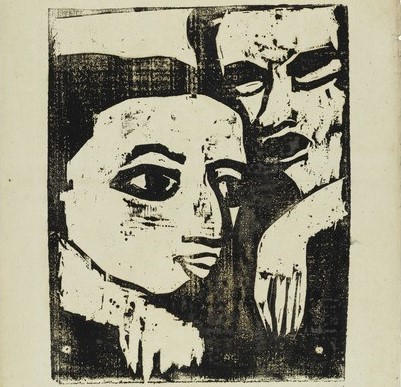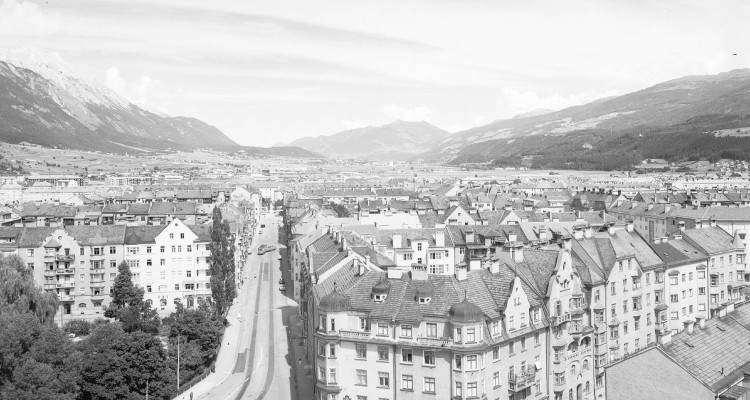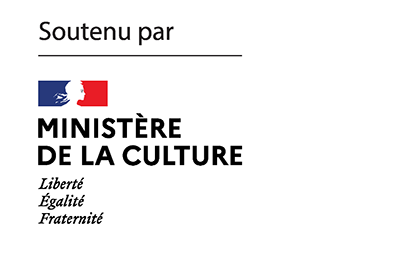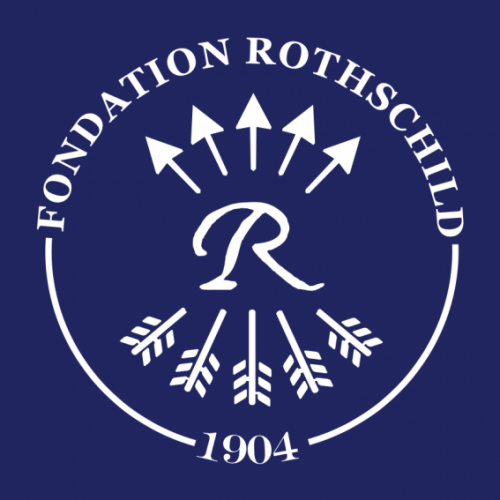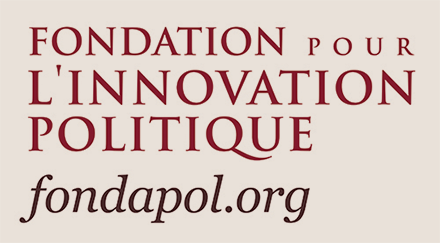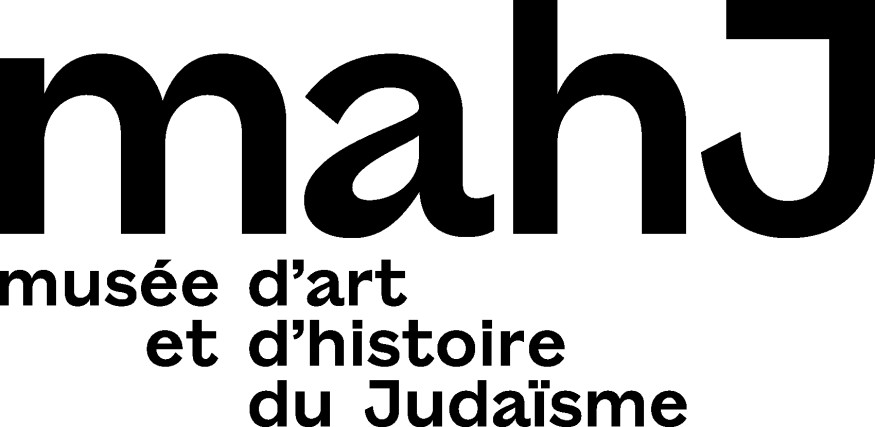“I hereby proclaim the independence of the Danubian Republic of the Jewish People.
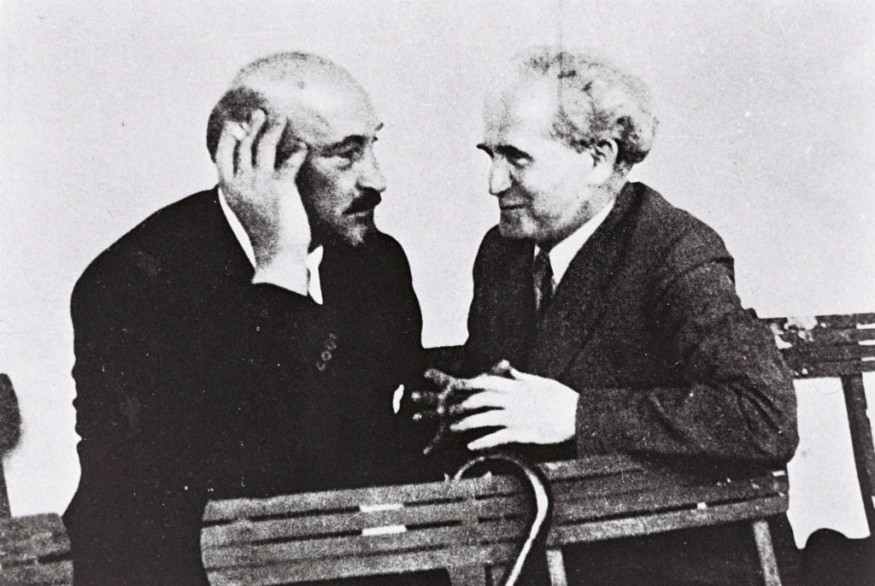
Crowds have gathered on Heldenplatz, in front of the Hofburg, the old imperial palace where the shadows of the Habsburgs still lurk. All eyes are turned towards the balcony where Hitler gesticulated ten years earlier in the glory days of the Anschluss. In application of the accords signed in July 1945 in Potsdam, the Provisional Council of the Jewish State of the Danube has taken up residence in the palace, along with the Jewish Agency which is managing, as best it can, the influx of survivors from all over Europe.
David Ben Gurion and Chaim Weizmann finally appear, surrounded by the other Zionist leaders, at the French window from which the old emperor Franz Joseph once greeted his subjects.
A military orchestra plays the Radetzky March as the colors of the new State of the Jewish people are raised.
A huge blue and white flag is hoisted on the pediment of the palace.
It shows a blue Star of David like the Danube on a white background like the edelweiss, Austria’s emblem, framed by two blue horizontal stripes like the two arms of the river. How could one imagine that this flag was designed for another land?
David Ben Gurion, head of the Provisional Council, finally speaks:
“The idea of the State of the Jews was born right here in Vienna. The city where Theodor Herzl founded Zionism is today becoming the capital of the first sovereign Jewish state since the destruction of the Kingdom of Judea. I therefore proclaim the independence of the Danube Republic of the Jewish people. As these people are referred to in its historic language as Israel, we hereby solemnly proclaim the independence of Israel.”
The crowd sings the Hatikva, the anthem of the Jewish State, the melody of which knows how much it owes to the Austro-Hungarian Empire. In Hebrew, the song always ends with “Eretz Tzion Yerushalayim,” but the authorities thought it would be a good idea to add a verse in German celebrating “Neue Zion Schön Blau Donau” [the new Zion, the beautiful blue Danube].
Then, like a wave breaking from the back of the square, another song rises, once written by a Viennese of Jewish origin, Johann Strauss II, the “Beau Danube Bleu”, in which the people express the joy of founding their State while raising the old city of Vienna. The launch of the song is no doubt not entirely spontaneous, as groups of young Zionists had prepared for this moment of the Jewish people embracing their land. But the whole crowd takes it up in joy and a huge waltz goes through the streets.
People dance all night long in a Vienna that has been rebuilt in two years by these pioneers of a new genre. Everywhere, from the Graben to the Prater, along the Ring, and on Kärntner Straße, Viennese waltzes and klezmer music alternate. At first sight, the celebration seems unsolicited, and in many ways it is, even though the main Zionist, political, trade union, and cultural organizations have carefully prepared this day of reunion with Jewish life in old Europe. In all the squares, musicians from classical ensembles, alumni of the Budapest and Prague conservatoires, rediscover the Viennese repertoire that the Nazis had confiscated. On the pavements, street musicians bring out their violins, clarinets and sometimes an accordion or balalaika, playing the songs and dances of the shtetl and the tunes that still punctuate the lives of the kibbutznikim and members of the youth movements who had returned from Palestine. A huge hora soon surrounds the Ring.
In the Festival Hall of Schönbrunn Palace, the American Committee for Jewish Austria holds a grand celebration. Leonard Bernstein conducts the Vienna Philharmonic Orchestra, where he made his debut a few years earlier. The actress Elisabeth Bergner, a native of the empire, appears in a sumptuous dress worthy of the roles she has played in Hollywood, where she embodied the Duchess of Langeais and above all Catherine the Great. Bergner, at almost 50, can finally savor this revenge on destiny, having been heckled by the Nazis when she appeared on the Berlin stage, and having been forced to flee Germany for London and Hollywood, where her tenacious Galician-Jewish accent got her into a lot of trouble.
In Schönbrunn, you need an Elisabeth to open the ball, and so it is Elisabeth Bergner on the arm of Otto Preminger, who has come to return to the town of his youth, where he made his first film before being recruited by Fox.
This historic waltz is filmed by Ernst Lubitsch, who is considered in Hollywood to be the most Viennese of directors when in reality he is just a Berliner.
With the exception of the scientists whose work is linked to the defense of the United States, the entire Austro-German Jewish intelligentsia that had been dispersed by Nazism and the war returned to Vienna. These Jews from Galicia, Bukovina, Bohemia, and Hungary, have returned from exile to celebrate the Jewish State, and are careful not to touch the Schönbrunn banquet hall decor. So much so that, from waltzes to mazurkas, one can feel the presence of ghosts, those of the Habsburgs and those of the empire’s magnificent Jews, Joseph Roth and Stefan Zweig, who died in exile because they could not bear the disappearance of their Austria.
The emotion increases when Arnold Schönberg takes the podium and makes a brief speech to say that he has returned to play the cello as he had done in the Bloch-Bauer family salon. The magic of his bow gives rise to a nostalgic waltz that he dedicates to Adele Bloch-Bauer, Klimt’s muse.
David Ben Gurion—clad in a rented dinner jacket hastily adapted to his measurements—makes a brief appearance at the start of the evening to greet these prestigious foreign personalities, most of whom write generous checks in support of the construction of the new State, even though they have no intention of settling in the land of the Jews themselves. But the Zionist leader is eager to be among his own people in the atmosphere of a popular festival that is supposed to last until dawn on the Prater. The Old Man, as he is affectionately called by his companions, loves nothing more than fairground attractions and likes to mingle with the acrobats. Despite his 62 years, he gives a fine demonstration of trapeze acrobatics that evening, before going on to taste the produce of the kibbutzim, and more particularly of the one of which he is a member, Sde Boker, now based in Lower Austria.
These people have every right to celebrate! They have been working for many months to rebuild the towns and bring the fields and pastures back to life, sparing no effort. Wheat will soon be growing on the plains where the kibbutznikim have wiped out the ravages of war; the vines promise fine harvests of kosher wine; and the new livestock farms will soon ensure the self-sufficiency of the Jewish State. In Paris, France-Soir runs a five-column front-page headline—”Les Juifs ont vengé Sissi” [the Jews have avenged Sissi]. Pierre Lazareff dispatched to the scene Joseph Kessel who makes a point of recalling the philosemitism of Empress Elisabeth, who had been the victim of an assassination attempt on her way home from visiting her friend the Baroness of Rothschild.
The majority of the former Austrian population flees without hesitating as the Red Army is advancing. A few tank shells fired at the Ring overcome the last reluctance.
Volunteers from Zionist organizations clear away the rubble. Vienna is a huge construction site. Its rebirth is a miracle. Refugees from the camps and ghettos mingle with the old pioneers who—willingly or unwillingly—left the ungrateful and hostile land of Palestine to come and build the Jewish State in the former Habsburg kingdom. Architects from the Bauhaus school return from the United States to realize the dreams of their youth. Vienna is rediscovering the spirit of the Secession and the artistic burgeoning that marked the end of the Empire. In the Jewish capital of 1948, the most audacious architectural works mingle with imperial monuments restored to their original state. Chaim Weizmann, President of the Provisional Council of the Jewish State, makes a personal commitment to Zita, the last empress, to respect the Capuchin crypt where the Habsburgs are buried and to maintain the Catholic Church’s sovereignty over the cathedral, despite the departure of the last faithful. Several historic Austrian holy sites are granted extraterritorial status, including the abbey of Heiligenkreuz and the Mayerling convent built on the site of the hunting lodge where Archduke Rodolf killed himself. The Jewish State has also pledged to look after Archduke Ferdinand’s car, as it is on display at the Belvedere Palace, along with the archduchess’s bloodied dress.
Jewish Vienna, however, has no qualms about erasing bad memories. Maria Theresien Platz is not just a reminder of the Czech fortress that Emperor Leopold piously dedicated to his mother. It also perpetuates the memory of an antisemitic empress who imposed a humiliating status on her Jewish subjects. While retaining the heavy Baroque monument dedicated to her, the town council replaces Marie Theresien with an emblematic Viennese woman—Adele Bloch-Bauer. Her famous portrait by Gustav Klimt was selected, along with those of Theodor Herzl and Sigmund Freud, for the first series of postage stamps issued by the Judenstaat.
Not far from there, Franz Joseph would certainly have approved of the name of Karl Lueger, the capital’s antisemitic mayor, whom he cordially detested being removed from the Ring and replaced by that of Theodor Herzl. At the dawn of the twentieth century, Lueger in his anti-Jewish delirium would never have believed that his apocalyptic prophecy would come true and that the mass settlement of Jews in Vienna would make the Ring “the Zion Street of the new Jerusalem.”
The Ring itself retains its name, but in the new vernacular, it quickly becomes known as the Strudel.
However, the Provisional Council and the Town Hall refuse to follow the advice of the Chief Rabbi, who would like to rename the Heldenplatz [Place of the Heroes] because of the pagan connotations of hero worship. The holy man wants to make it the Place of the Kings of Israel. This name is eventually chosen for Graben Square. At Max Brod’s request, Graben Street is named after Franz Kafka, who always stayed at the hotel of the same name during his visits to Vienna.
Outside the city walls, the Karl Marx Hof has regained the name it was given by the Nazis, and the social housing built by the Social Democratic municipality in the 1920’s has been renovated by the Jewish Agency to accommodate immigrants. Cranes are erected everywhere and large apartment blocks are built, marking the resumption in the new State of the construction of apartment blocks designed in the spirit of communal housing, as in the days of Vienna the Red. Several survivors of the former Austrian Socialist Party, including Friedrich Adler, choose to return from exile. In the kibbutzim, they rediscover their concept of voluntary collectivization. In the 1930’s, Adler and Léon Blum had co-chaired the Socialist International’s Committee for a Jewish and Workers’ Palestine. In a speech given at the inauguration of the Arlozorov Hof (a radiant city designed on the model of the Karl Marx Hof to promote collective life, from the education of children to the care of the elderly), Adler emphasizes the deep kinship between Austrian libertarian socialism and the collectivist project once developed by Chaim Arlozorov.
The best musicians and the greatest conductors compete for the honor of playing in the prestigious opera house, which has been raised from the ruins. For its reopening, Arnold Schönberg himself conducts the suite “Dreimal Tausend Jahre” [Three times a thousand years], Opus 50, composed to celebrate the rebirth of a State for the Jewish people.
In just a few months, Viennese life returns to its high points. Musicians and artists flock to the Café de l’Opéra and the Café Mozart. The actors of the Habima move into the Burgtheater and revive the theatre café. Political leaders are more likely to frequent the Landtmann, whose apple strudel, poppy seed cake, and käskichen would make Jewish mothers jealous. The Hotel Sacher, meanwhile, seems to have once again become the center of the world, with so many dignitaries and diplomats coming to welcome the birth of the Jewish State.
Scholars and philosophers flock to Vienna to build two universities, one German and one Hebrew, despite the restrictions adopted by the United States to prevent a brain drain. For its part, the USSR, while supporting the creation of the Jewish State of the Danube, limits emigration to Polish and Baltic Jews who do not have a degree. The provisional authorities of the Judenstaat undertake not to seek to attract Jewish artists and scholars from the USSR. In any case, there is already a plethora of grey matter in Vienna. If Poland in the 1930’s had not restricted Jewish access to university, it would have been impossible to fill the jobs of laborers and waiters…
However, the tensions that arise between the victors of the Second World War put the new State in a delicate position. Ever since Churchill’s famous Fulton speech, the Judenstaat seems to be a no man’s land between the dividing lines of Europe. Both sides are wondering which side of the Iron Curtain the Jewish State will be on.
This is obviously why the Provisional Council decides to proclaim independence, without waiting for the UN to vote. It chooses the date of 14 May 1948, the anniversary of the annexes to the Potsdam agreements definitively initialed on 14 May 1945 and provisionally allocating the land of Austria to the Jews, without any mention of the transfer of the National Home in Palestine. The signing of these agreements precedes by one day the deadline of 15 May set by the Allies for the signing of a definitive treaty on the status of former Austria.
Ben Gurion thus presents the Western Allies and the Soviets with a fait accompli.
It is in his capacity as Prime Minister of an independent Jewish State that he receives the British Ernest Bevin, the French Georges Bidault, the Soviet Vyacheslav Molotov, and the American Secretary of State George Marshall at the Belvedere Palace on 15 May 1948.
The presence of the latter arises indignation in some quarters. The Marshall Plan, which provides for the generous pouring of millions of dollars into a Germany where many former Nazis have returned to their jobs in the public or private sector, is still a sore point for many Jews, and for good reason. Two hostile demonstrations try to make their way to the Belvedere. One wants to respond to a call from Herut, while the other brings together Mapam, the Bund and the Communist Party. For once, both processions are chanting the same slogan—”Kein Gelt für Nazis!” [no money for Nazis]. Led by Menachem Begin, the right-wing nationalists march behind a biblically inspired banner—”Marshall raises Sodom from the ashes.” Demonstrators hold up photo montages showing the American Secretary of State—who would easily do without it—dressed in SS uniform. Camp survivors donned their striped uniforms and march at the head of the procession of the left. The crowd waves placards bearing the names of Nazis cleared by the Germans. A huge banner reads—”Marshall Plan = 600 million dollars for 6 million Jews?” But this is only the first installment. A military roadblock blocks access to the Belvedere and a cordon of police officers separate the two processions. The Herut activists shout “Kapo! Kapo!”, while those of the left sing the Jewish Partisan chant in Yiddish.
At the opening of the meeting, Ben Gurion shows himself to be conciliatory on the question of the borders of Hungary and Czechoslovakia, much to Molotov’s satisfaction. By making this concession to the Soviets, the leaders of the young Republic of the Jewish People intend to send a message to George Marshall. Although less radical than the demonstrators, they consider his plan for the recovery of Germany indecent. Marshall, in a gesture of appeasement, informs them that the borders with Tyrol and Germany would be strictly controlled by the U.S. Army and that there would be no German police or customs officers at the checkpoints.
However, the Secretary of State makes one important clarification—”Because of its commitment to neutrality, the Republic of the Jewish People cannot be included in our plan. However, like all European states, it will benefit from non-repayable credits and loans.”
With these guarantees in place, the four victors in the war against Nazi Germany sign the Belvedere Treaty recognizing the sovereignty of the Republic of the Jewish People over most of the territory of former Austria. This instrument stipulates that the Republic would be neutral and would not seek to ally itself with any of the four signatory powers. This clause eases Molotov’s fears that the Americans would set up military bases on the external borders of the socialist camp. At the same time, it reassures the Americans, the British, and the French, who had no desire to extend the Soviet zone of influence. Molotov demands that the treaty includes an obligation for the Jewish Republic to build a monument in Vienna for the Soviet soldiers who fell while driving the Wehrmacht out of Austria. This monument is indeed built and can still be seen in Vienna. The Government of the Republic of the Jewish People adds to it the tomb of a Red Army soldier, Yevgeny Abramowitch Lewine, identified among the many bodies found in the rubble. This hitherto completely unknown infantryman is buried with honors at the foot of the monument to the Soviet dead, much to Moscow’s displeasure. However, as this final tribute is an integral part of the monument’s inauguration ceremony, a Soviet officer delegated to the site is forced to posthumously award the title of Hero of the Soviet Union to Private Lewine.
Including the 12 Mapam MPs, the Zionist Socialist coalition has 53 seats out of 120. In order to achieve a majority, Mapai, therefore, needs to win over the 10 MPs from Josef Burg’s National Religious Party. It will take 12 days and 12 nights of negotiations to form the government. The clerics are demanding that Mosaic Law be applied to all civil status documents, that public services and businesses observe the Shabbat and Jewish holidays, and that agricultural production be placed under the control of the Beth Din, the rabbinical court. Mapam has difficulty accepting this last demand. However, the Histadrut [General Organization of Workers] is pleased to note that adherence to the Hebrew calendar guarantees workers longer holidays than the two weeks imposed by the Front Populaire in France. In addition, the weekly rest period includes preparation for the Shabbat and therefore lasts a minimum of 36 hours.
The left wing of the coalition finally accepts the compromise on the condition that it obtains important portfolios. To meet this demand, the positions of deputy ministers of Public Security, Justice, and Economy are created, and Education is shared between the clerics and Mapam, the latter having undivided control of Agriculture and Health. However, Ben Gurion has an absolute majority in the cabinet and the upper hand in Defense, Foreign Affairs and Finance. He officially becomes Prime Minister, the Knesset having preferred this very British term to that of Chancellor, even though the latter has more local color. The first government is held together by the Prime Minister’s charisma.
And the Prime Minister soon needs it. The Jewish Republic before long finds itself surrounded by hostile neighbors, so much so that the Knesset passes a law extending military service to two years for girls and boys aged 18, with no deferment of studies and compulsory periods of reserve service. However, Josef Burg managed to obtain exemptions for yeshiva students who are supposed to be guarding the Torah while others are guarding the borders.
In 1948, the danger comes mainly from the Yugoslav border, protected by the Bar Lev line, and from the borders of Tyrol and Germany, in front of which, despite the assurances given by the United States, the Jewish State has demarcated a military zone. Admittedly, the Soviets have erected barbed wire along the Hungarian border, but all you have to do to enter Czechoslovakia is pass through rigorous controls. Bratislava for its proximity and Prague for the vestiges of the splendor of its Jewish community attract tourists and pilgrims from the Jewish State. Spiritual tourism is breathing new life into Prague’s old synagogues, with tour operators in Vienna offering weekends that include Shabbat services in the Alte-Neue Schule and a moment of meditation in the old cemetery in front of the Maharal’s tomb.
Stalin is concerned. The first incident occurs in December 1949. Max Brod, who regularly travels to Prague to pay his respects at Franz Kafka’s grave, is stopped by the political police and expelled from Czechoslovakia after a long interrogation. Three months later, in March 1950, Vlado Clementis, Minister of Foreign Affairs and member of the Central Committee of the Communist Party, is ousted from the government, expelled from the party, and imprisoned for treason. The border crossings with the Jewish Republic are closed without explanation and economic and cultural exchanges are unilaterally suspended by Czechoslovakia.
The Aman, the Jewish State’s military intelligence service, alerts the government in Vienna—the number of troops stationed behind the Czechoslovak border has increased tenfold. Armored regiments block the roads. These soldiers wear the uniforms of the Czechoslovak army, but their officers are flanked by Soviet advisers.
After Clementis, other ministers and leaders of the PCT, including the party’s general secretary, Rudolf Slanski, are arrested in their turn. Almost all of them are Jewish and accused of being part of a Zionist conspiracy. As evidence, the PCT organ Rude Pravo publishes photos of the unofficial meeting between Vlado Clementis and Golda Meir in Bratislava in 1948.
In Moscow, an article in the Pravda denounces a vast Zionist plot directed from Vienna with the aim of reconstituting the Habsburg Empire by integrating Czechoslovakia and Hungary into the Jewish Republic of the Danube. Curiously, Tito, who served in the Austro-Hungarian army in 1914, is mentioned as an accomplice in the Zionist plot, despite his appalling relations with the government in Vienna.
In Moscow in February 1950, Stalin lets his anger explode before the Central Committee of the CPSU—”Every Zionist is an agent of the American intelligence service. The Jews believe that they have been saved by the United States, the country where they can get rich and live like capitalists!” And he echoes the Pravda‘s accusations about the plot hatched in Vienna to annex Czechoslovakia and Hungary to the Jewish State—”They want to create an Austro-Hebrew empire in the heart of Europe!”
In truth, Stalin is worried about the triumphant welcome given by the Jewish community in Moscow to Golda Meir, who came to take up her post as ambassador of the Jewish State in the USSR.
Tens of thousands of Soviet Jews accompany her to Moscow’s Great Synagogue to celebrate the Jewish New Year. For the first time since Piotr Kropotkin’s funeral in 1921, a mass demonstration escapes the control of the Communist Party. The Jewish conspiracy has thus spread to the Soviet Union…
The members of the USSR Jewish Anti-Fascist Committee are arrested. Writers, poets, musicians, and scientists are locked up in the Lubyanka gaols, and Solomon Lossowski, who has set up the committee at Stalin’s personal request, is not spared.
The Jewish Republic of the Danube, now known as Israel, is henceforth surrounded by a hostile bloc. Was this the reason for leaving Palestine? Passions are running high in the Knesset, in all the cafés of Vienna, in the kibbutzim and on the squares of Salzburg, Graz, and Linz. Has the leadership of the Zionist movement led the children of Israel into a trap? The former Jewish home of Palestine is also surrounded by enemies, but all the Arab armies combined are nowhere near the fighting strength of the Red Army! Stalin has the Jewish State at his mercy.
Who is Abba Eban secretly planning to visit after meeting General Koenig in Strasbourg? Will the Danube be the scene of a naval battle? Will Dayan be able to stand up to the Hungarian and Czechoslovak armies?
Find out in our next episode !
Guy Konopnicki
Guy Konopnicki is a journalist and writer. Among his numerous books, one may quote the one he wrote with Brice Couturier, “Réflexions sur la question goy” [Reflections on the Gentile Question] (Lieu Commun Ed., 1988) and “La faute des Juifs – Réponse à ceux qui nous écrivent tant” [The Jews’ Fault—Reply to those who write to us so much] (Balland Ed., 2002).

